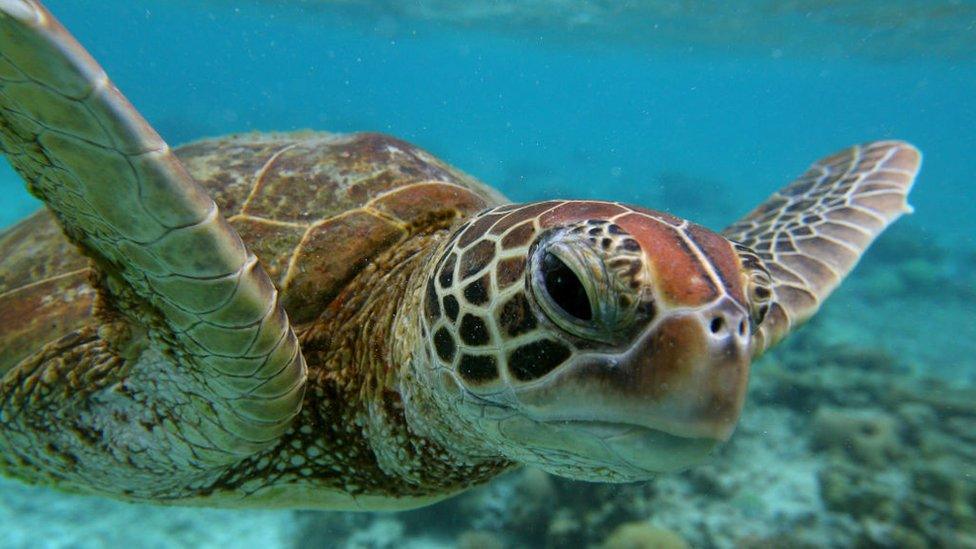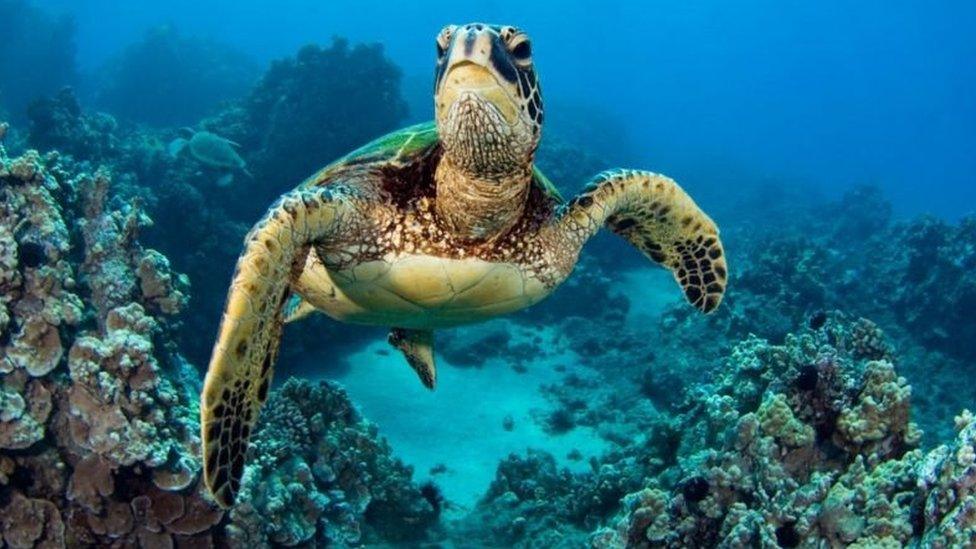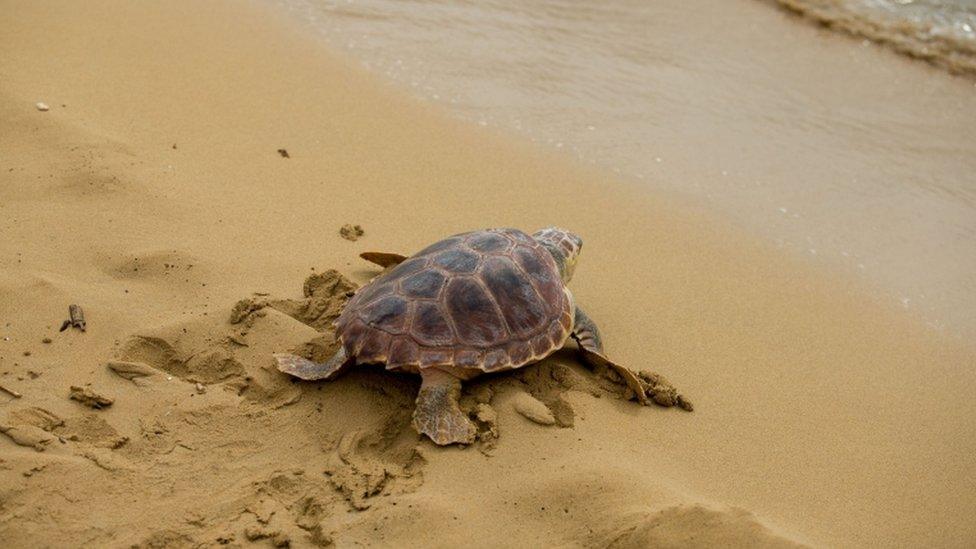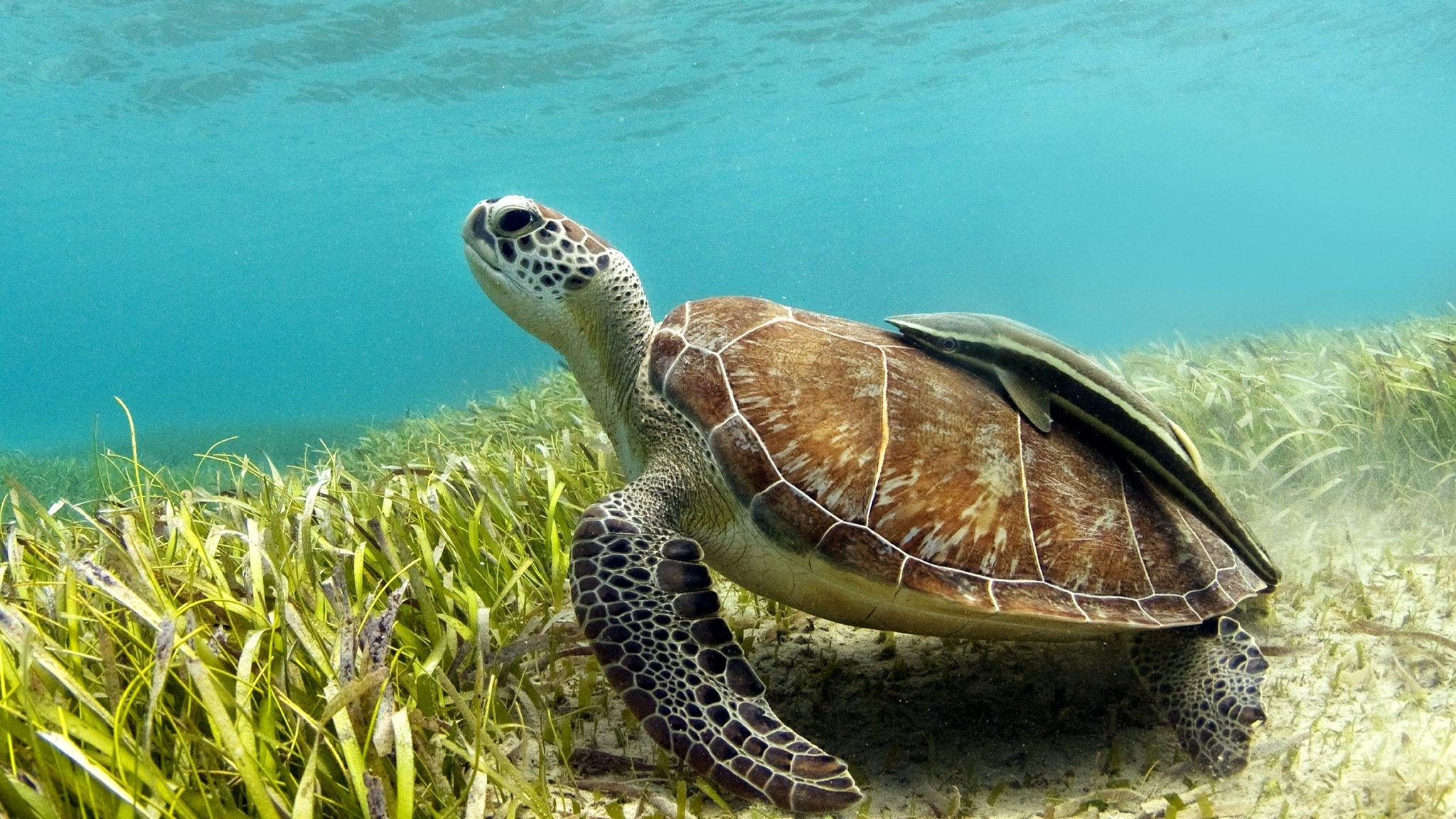How is plastic affecting young sea turtles?
- Published
- comments

The study included a total of 121 sea turtles from five of the world's seven species
Plastic pollution is one of the biggest issues facing the environment, and a new study suggests it could be having a significant impact on baby turtles.
The research team found plastic inside young turtles along both the east and west coasts of Australia.
After hatching on beaches, the young reptiles travel on currents, which is water that moves in a particular direction, and spend their early years in the open ocean.
However, these currents carry lots of plastic which many of the turtles end of swallowing because they feed near the surface of the water.
"Juvenile turtles have evolved to develop in the open ocean, where predators are relatively scarce," said Dr Emily Duncan who is based at the Centre for Ecology and Conservation at Exeter University's Penryn Campus in Cornwall.
"However, our results suggest that this evolved behaviour now leads them into a trap - bringing them into highly polluted areas such as the Great Pacific Garbage Patch.
"Juvenile sea turtles generally have no specialised diet - they eat anything, and our study suggests this includes plastic.
"We don't yet know what impact ingesting plastic has on juvenile turtles, but any losses at these early stages of life could have a significant impact on population levels."

Researchers looked at young sea turtles that had either been washed up or were accidentally caught by fishers on the Australian coasts.
The study included a total of 121 sea turtles from five of the world's seven species: green, loggerhead, hawksbill, olive ridley and flatback.
According to the data, the proportion of turtles which were found to contain plastic was far higher on the Pacific coast. Plastic was found in 86% of loggerheads, 83% of greens, 80% of flatbacks and 29% of olive ridleys.
On the Indian Ocean coast, 28% of flatbacks, 21% of loggerheads and 9% of green turtles contained plastic.
Although no plastic was found in hawksbill turtles on either coast, only seven hawksbills were included in the study.

Young turtles feed close to the surface off the water, meaning they're more likely to eat plastic found in the ocean
The researchers found that plastic in the Pacific turtles was mostly hard pieces which may have come from a range of different products used by humans, while the types of plastic found in the Indian Ocean plastics were mostly fibres which are thought to come from fishing ropes or nets.
The polymers which were most frequently eaten by turtles in both oceans were polyethylene and polypropylene which are both very common.
"These polymers are so widely used in plastic products that it's impossible to pin down the likely sources of the fragments we found," said Dr Duncan.
"Hatchlings generally contained fragments up to about 5mm to 10mm in length, and particle sizes went up along with the size of the turtles.
"The next stage of our research is to find out if and how plastic ingestion affects the health and survival of these turtles."
- Published13 February 2020

- Published14 May 2020

- Published29 April 2021

